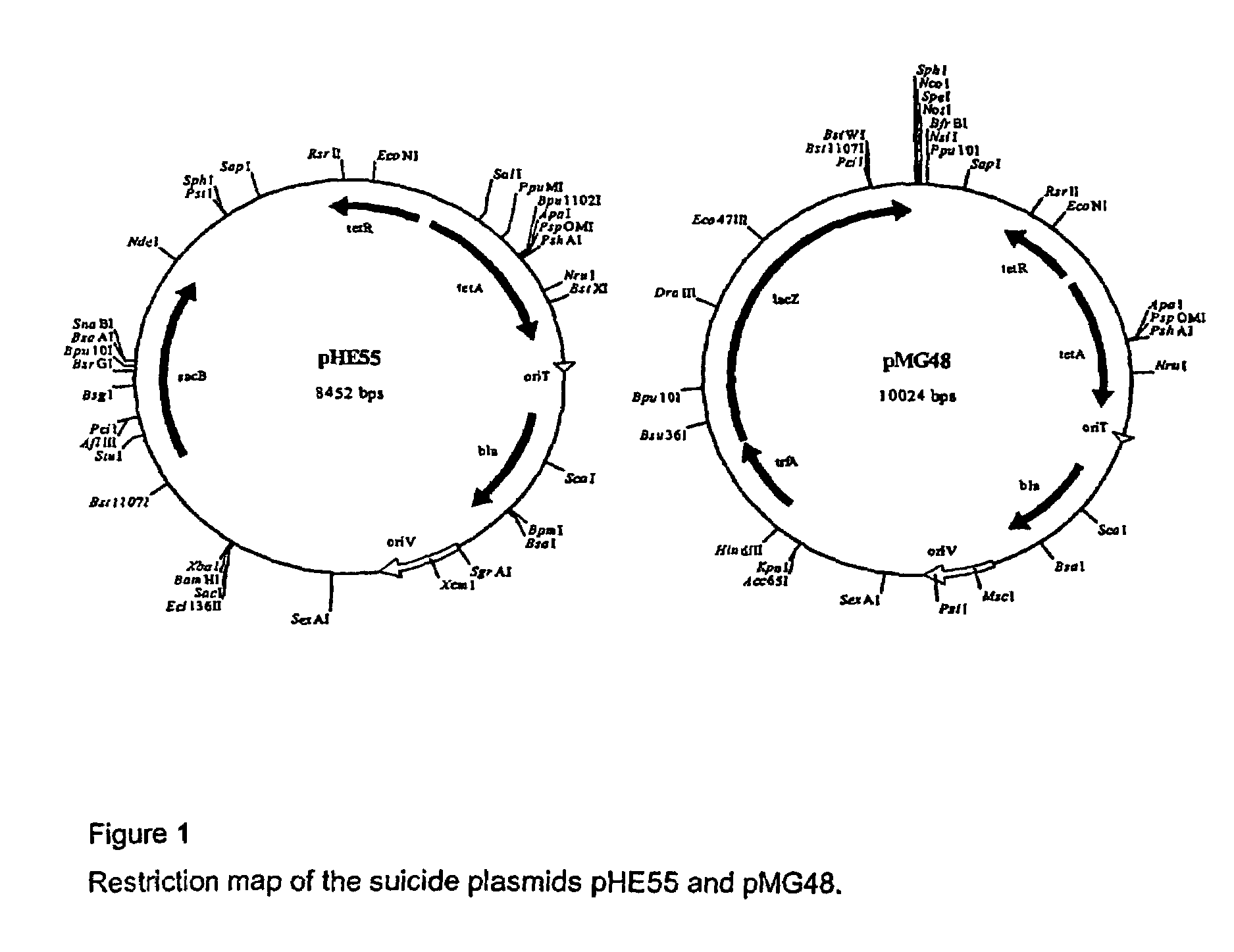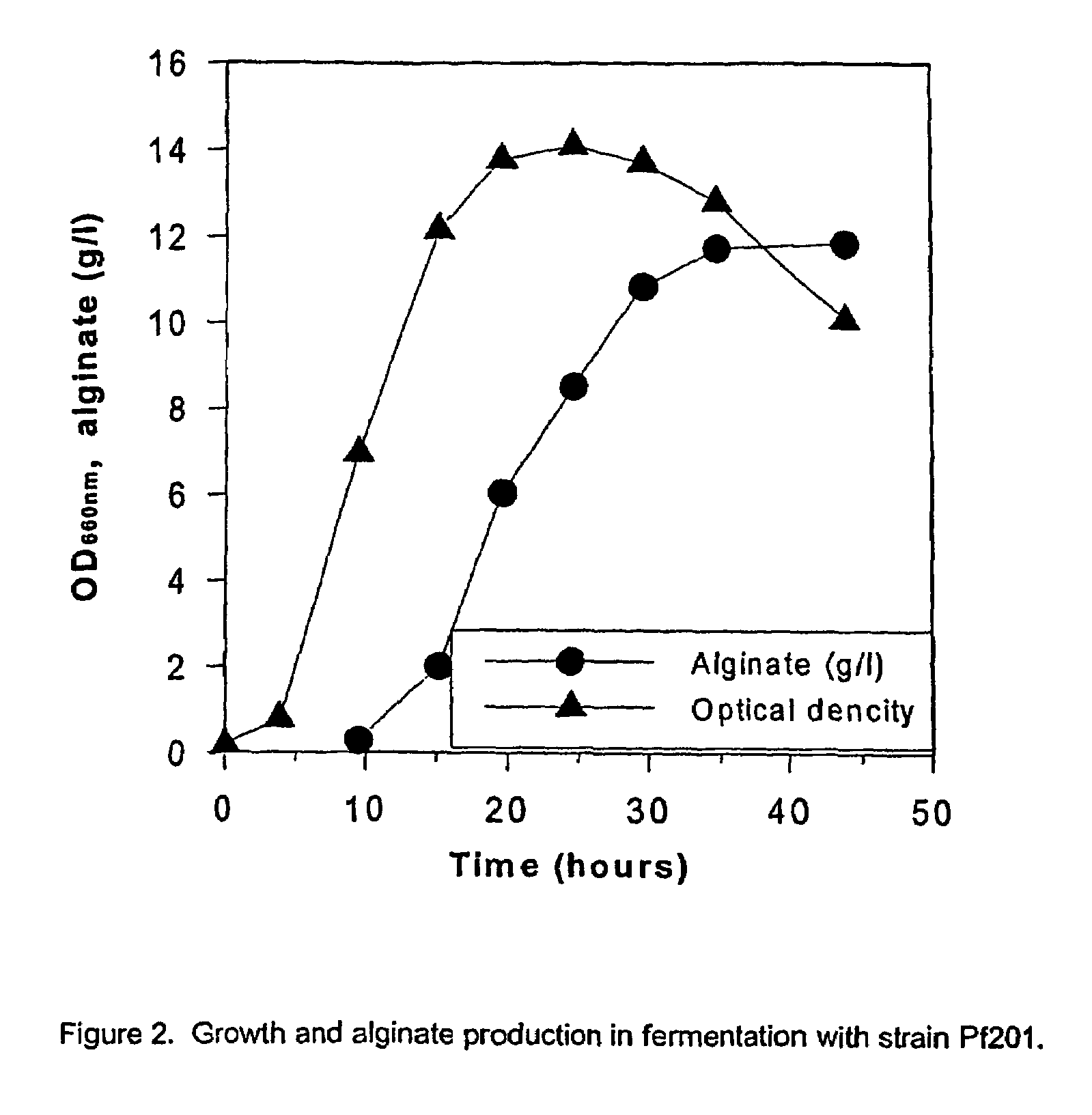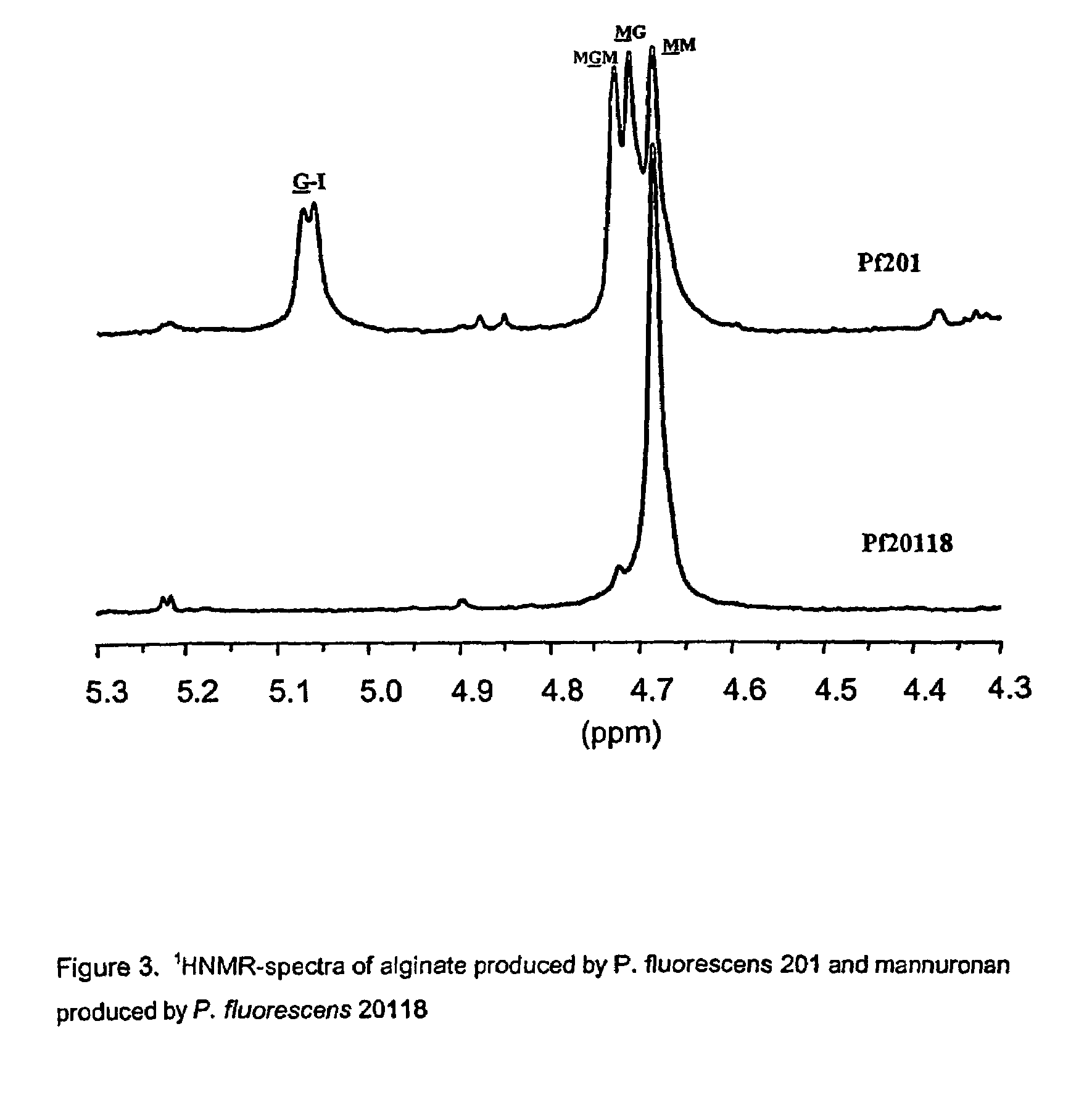Mutant strains of Pseudomonas fluorescens and variants thereof, methods for their production, and uses thereof in alginate production
a technology of pseudomonas fluorescens and mutant strains, applied in the field of new mutant strains of pseudomonas fluorescens, can solve the problems of limited use, large amount of alginates, and high molecular weight of alginates, and achieve the effect of large amounts of algina
- Summary
- Abstract
- Description
- Claims
- Application Information
AI Technical Summary
Benefits of technology
Problems solved by technology
Method used
Image
Examples
example 1
Preparation of Mutant Strain Pf201
[0070]The wild type P. fluorescens NCIMB 10525 was purchased from The National Collections of Industrial Food and Marine Bacteria Ltd. (NCIMB). The wild type does not produce significant amounts of alginate. In order to isolate alginate over-producing mutants exponentially growing cells of P. fluorescens NCIMB 10525 were subjected to nitrosoguanidine (NG) mutagenesis. The strain was grown in nutrient broth (CM67, Oxoid) with 0.5% yeast extract and washed twice in 0.1 M citrate buffer (pH 5.5) before treating the cells with 25 ug / ml nitrosoguanidine (NG) in citrate buffer for 1 hour at 30° C. The mutagenized cells were washed with 0.1 M phosphate buffer pH 7.0 containing KH2PO4 (13.6 g / l) and NaOH (˜2.32 g / l) and inoculated (2%) into nutrient broth with yeast extract. The cells grew overnight and were then frozen as 1 ml aliquots of NG-stock.
[0071]Dilutions of the culture were plated on PIA-medium containing carbenicillin (900 μg / ml) and incubated at...
example 2
Cloning and Sequencing of Parts of the Alginate Biosynthetic Operon
[0072]A gene library of the wild-type strain NCIMB 10525 was constructed in λDASH II (lambda Dash II) (purchased from Stratagene). Chromosomal DNA was isolated as described by Ausubel et al., 1993, Current protocols in molecular biology. Greene Publishing Associates, Inc and John Wiley & Sons Inc, New York. The gene-library was then constructed by inserting partially Sau3AI-digested chromosomal DNA from NCIMB 10525 into BamHI-digested lambda Dash II and infecting E. coli XL1Blue MRA(P2) with the in vitro-packaged phages according to the manufacturers instructions (Stratagene BamHI / Gigapack III Gold Extract). Labeling of DNA-probe and detection of hybridizing λ-clones were done by use of DIG DNA Labeling and Detection Kit (Boehringer Mannheim) according to the manufacturers instructions. A 3.8 MfeI-NcoI DNA-fragment from pBBg10 containing algG flanked by parts of algE and algX from P. aeruginosa was labeled and used t...
example 3
Preparation of Epimerase Negative Variant Strains
[0074]The mutant strain Pf201 of Example 1 was subjected to further mutagenesis using nitrosoguanidine using a modification of the method described in Example 1. Exponentially growing cells of P. fluorescens NCIMB 10525 were subjected to nitrosoguanidine (NG) mutagenesis: The bacterial cells were washed twice with equal volume of Tris / maleic acid (TM) buffer pH 6.0 containing NH4SO4 (1.0 g / l), CaCl2*2H2O (4.4 mg / l), KNO3 (6.1 mg / l), maleic acid (5.8 g / l), Tris (hydroxy methyl)-amino methane (6.05 g / l), FeSO4*7H2O (0.25 mg / l) and MgSO4*7H2O (0.1 g / l). Cells were re suspended in 80% of original culture volume of TM-buffer and exposed to NG (50 μg / ml) for 1 hour at 30° C. The mutagenized cells were washed with 0.1 M phosphate buffer pH 7.0 containing KH2PO4 (13.6 g / l) and NaOH (˜2.32 g / l) and inoculated (2% inoculum) into LB-medium and incubated over-night. The death rate of the mutagenesis procedure was calculated to approximately 90% u...
PUM
| Property | Measurement | Unit |
|---|---|---|
| molecular weight | aaaaa | aaaaa |
| molecular weight | aaaaa | aaaaa |
| concentrations | aaaaa | aaaaa |
Abstract
Description
Claims
Application Information
 Login to View More
Login to View More - R&D
- Intellectual Property
- Life Sciences
- Materials
- Tech Scout
- Unparalleled Data Quality
- Higher Quality Content
- 60% Fewer Hallucinations
Browse by: Latest US Patents, China's latest patents, Technical Efficacy Thesaurus, Application Domain, Technology Topic, Popular Technical Reports.
© 2025 PatSnap. All rights reserved.Legal|Privacy policy|Modern Slavery Act Transparency Statement|Sitemap|About US| Contact US: help@patsnap.com



